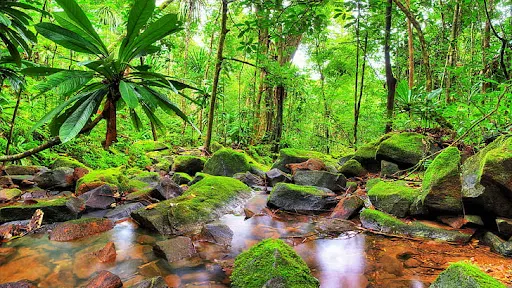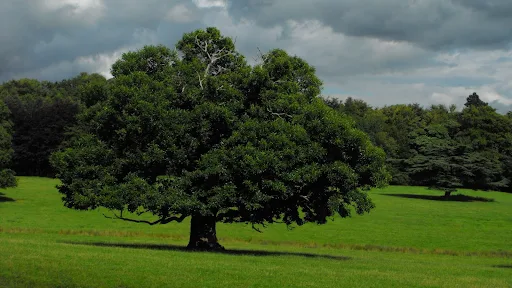Welcome to the fascinating world of Plants and Trees! These green wonders not only enhance our surroundings but also play a crucial role in our environment. In this blog, we'll delve into the various aspects of plants and trees, exploring their types, benefits, and tips for cultivation. Whether you're a gardening enthusiast or simply curious about the Natural world, this guide will provide valuable insights into these remarkable life forms.
Understanding Plants and Trees: An Overview
Plants and trees are more than just decorative elements in our environment; they are vital to the health of our planet. Plants encompass a wide range of species, from tiny mosses to towering sequoias. Trees, a subset of plants, are characterized by their woody stems and significant height. Understanding the basic differences between these two categories helps in appreciating their unique roles and contributions.
The Benefits of Plants and Trees for the Environment
Plants and trees provide numerous environmental benefits that are essential for sustaining life on Earth. They produce oxygen through photosynthesis, which is crucial for our survival. Trees, in particular, play a significant role in mitigating climate change by absorbing carbon dioxide. They also help prevent soil erosion, manage water cycles, and support biodiversity by providing habitats for countless species.
Top 10 Plants and Trees You Should Know
To make the most of your gardening efforts or to simply enhance your understanding of plants and trees, here are ten remarkable species that are celebrated for their beauty, functionality, or unique characteristics:
1. Oak Tree (Quercus spp.)
The oak tree is renowned for its sturdy wood and majestic stature. It's a symbol of strength and longevity and provides critical habitat for wildlife. Oaks are also valued for their broad canopy, which offers substantial shade.
2. Maple Tree (Acer spp.)
Maple trees are celebrated for their stunning autumn foliage, which ranges from fiery reds to bright oranges. The sugar maple, in particular, is famous for its sap, which is used to produce maple syrup.
3. Pine Tree (Pinus spp.)
Pines are evergreen conifers that provide year-round greenery. They are essential for forest ecosystems and are valued for their timber and resin. Pine needles are also used in various traditional practices and as mulch.
4. Rose (Rosa spp.)
Roses are perhaps the most iconic flowering plants, known for their exquisite blooms and pleasant fragrance. They come in a wide range of colors and varieties, making them popular choices for gardens and floral arrangements.
5. Lavender (Lavandula spp.)
Lavender is appreciated for its aromatic flowers and soothing properties. It’s a versatile plant used in aromatherapy, cooking, and as a natural insect repellent. Its purple blooms add a splash of color to any garden.
6. Fern (Polypodiopsida spp.)
Ferns are ancient plants known for their feathery foliage and adaptability. They thrive in shady, moist environments and are often used as ground cover or in shaded garden beds.
7. Japanese Maple (Acer palmatum)
Japanese maples are prized for their delicate, deeply lobed leaves and striking color variations, ranging from green to deep red. They are often used as ornamental trees in garden design due to their elegant appearance.
8. Sunflower (Helianthus annuus)
Sunflowers are bright and cheerful plants known for their large, sun-like blooms and tall stems. They are not only aesthetically pleasing but also produce edible seeds that are a nutritious snack.
9. Aloe Vera (Aloe barbadensis miller)
Aloe vera is a succulent plant known for its healing properties and thick, fleshy leaves. The gel inside its leaves is widely used in skincare products and home remedies for its soothing effects.
10. Bamboo (Bambusoideae spp.)
Bamboo is a fast-growing grass that is highly versatile and eco-friendly. It is used in construction, crafts, and as a sustainable alternative to traditional wood products. Bamboo also adds a unique aesthetic to gardens and landscapes.
How to Care for Your Plants and Trees
Proper care is crucial for ensuring that your plants and trees thrive. For indoor plants, it’s important to consider light requirements, watering schedules, and humidity levels. Overwatering is a common mistake, so it's essential to let the soil dry out between waterings and ensure good drainage.
Outdoor trees require more extensive care, including proper planting techniques, mulching, and regular pruning. It's vital to choose the right tree for your climate and soil conditions. Additionally, monitoring for pests and diseases will help maintain the health of your trees.
Creating a Garden with Plants and Trees
Designing a garden involves more than just planting; it’s about creating a harmonious space that reflects your style and meets your needs. Consider factors such as sunlight, soil type, and space when selecting plants and trees. Incorporating a mix of perennial and annual plants ensures year-round interest and color.
Trees can serve as focal points or provide shade and privacy. Choosing native species can enhance the ecological balance and reduce maintenance needs. Additionally, incorporating companion planting techniques can improve plant health and yield in vegetable gardens.
The Role of Plants and Trees in Urban Areas
Urban environments often face challenges such as air pollution and heat islands, which can be mitigated by incorporating plants and trees. Urban green spaces, such as parks and street trees, provide essential cooling effects and improve air quality. They also offer recreational opportunities and enhance the aesthetic appeal of cityscapes.
Green roofs and vertical gardens are innovative solutions that bring the benefits of plants to limited spaces. These practices not only improve the urban environment but also contribute to the well-being of residents by offering natural retreats in bustling cities.
Future Trends in Plant and Tree Cultivation
The future of plant and tree cultivation is marked by exciting innovations and trends. Advances in technology, such as smart irrigation systems and genetic engineering, are making it easier to care for and cultivate plants and trees. Sustainable practices, such as organic gardening and permaculture, are gaining popularity as people become more environmentally conscious.
Urban agriculture is another emerging trend, with more people growing their own food in small spaces. Community gardens and green initiatives are promoting local food sources and strengthening community bonds. These trends reflect a growing awareness of the importance of plants and trees in our lives and the environment.




















